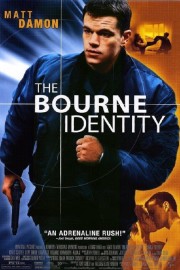The Bourne Identity
With his adaptation of Robert Ludlum’s best-selling spy thriller, director Doug Liman accomplished two things: 1) he finally created a sustainable American equivalent to James Bond, and 2) he dramatically changed his own course as a filmmaker. Up until “Bourne,” he was known for low-budget comedies “Swingers” and “Go!”; after, he went on to direct another smash with “Mr. & “Mrs. Smith,” as well as a real-life tale of espionage with “Fair Game.”
Of course, “The Bourne Identity” did one more thing as well; for the first time since his breakthrough with “Good Will Hunting,” it turned Matt Damon into a bankable movie star. But how much of that is the character itself? In this first film, I’d say it was 60/40 in favor of the character driving the box-office, but by the time 2007’s “The Bourne Ultimatum” came out, Damon was so readily identifiable with the role that he was the draw for people, which is just one reason this weekend’s Damon-less “The Bourne Legacy” is such a gamble.
But let’s talk about this first film. It begins with Damon’s Jason Bourne face down in the ocean. He is pulled out by a fishing boat. Unconscious, he is patched up; a bullet removed from his body, as well as a device with the number of a Swiss bank account, he also can’t remember who he is. When he goes to the bank, however, he finds out there’s more to him than just his name. In fact, he has several, along with stacks of money and a gun. For the next three films, he will be piecing together his life, and finding out the type of person he is compared to the type of person he was.
The series achieved greater acclaim with director Paul Greengrass at the helm (with “The Bourne Supremacy” and “Ultimatum”), but Liman deserves a lot of credit for setting the tone of the franchise with “Identity.” Three key behind-the-scenes collaborators in all of the Damon films are: cinematographer Oliver Wood, whose hand-held camera gives the series a less-sophisticated, more personal feel than the Bond films have; composer John Powell, who hit a new level of musical intrigue with his scores for this film, and especially the Greengrass movies; and screenwriter Tony Gilroy, whose name is so synonymous with the franchise that when Greengrass and Damon bowed out of the new film, he stepped into the director’s chair. Say this for Universal– they knew that some continuity with the earlier film was better than none at all.
It’s a great compliment to what Liman (and later Greengrass) accomplished that when Daniel Craig took over 007, the series had less the polish of classic Bond, and more the gritty, Earthy style of the “Bourne” movies. However, one thing Bond can’t really replicate (although it tried with 2008’s “Quantum of Solace”) is this franchise’s sustained narrative. Events that happen in this first film resonate throughout the rest of the series. Characters that have great importance in “Identity’s” narrative– whether they’re Brian Cox’s politically-connected administrator; Julia Stiles’s Treadstone operative; or Franka Potente’s Maria, who gets caught in the middle when she gives Bourne a ride to Paris –play even greater roles in later entries. That all started with Liman, and ten years later, what Liman accomplished still holds up remarkably well.










